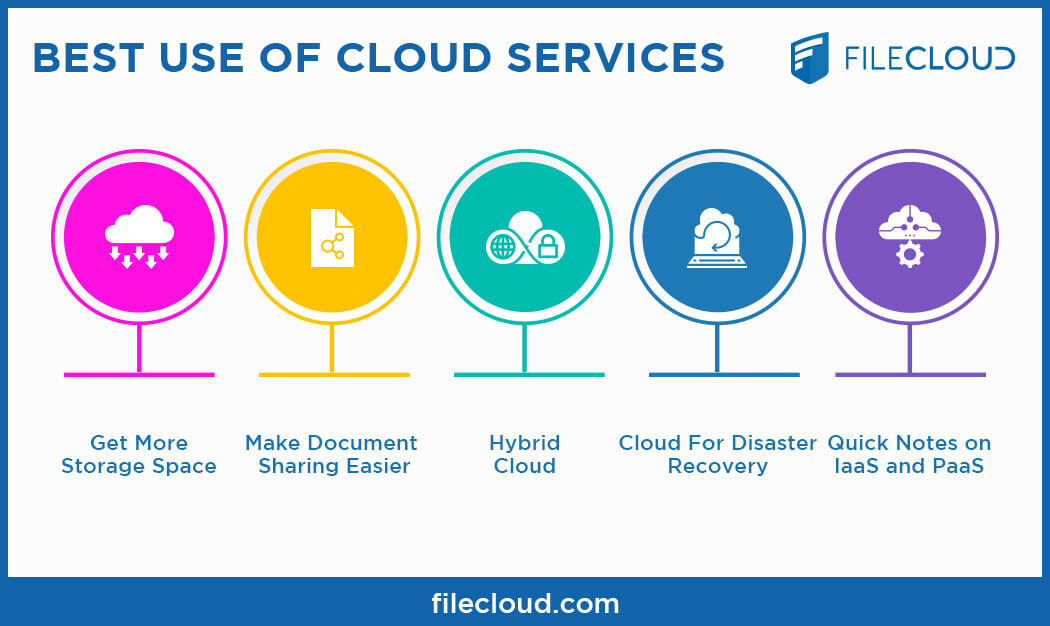Unlocking Success with LinkDaddy Cloud Services: Optimizing Universal Cloud Service Influence
Unlocking Success with LinkDaddy Cloud Services: Optimizing Universal Cloud Service Influence
Blog Article
Simplify Your Framework With Cloud Services
As businesses navigate the ever-evolving landscape of modern technology and information monitoring, the function of cloud services in simplifying facilities has become significantly prominent. The allure of streamlined processes, improved effectiveness, and boosted resource allowance through cloud remedies is undeniable. The journey towards a much more affordable and agile IT infrastructure involves more than just migrating to the cloud. It needs a tactical method and a deep understanding of the subtleties of cloud fostering. So, exactly how can companies properly navigate this change and absolutely open the possibility of cloud services for simplifying their framework?
Advantages of Cloud Services
Cloud services provide a structured strategy to managing IT framework, offering organizations with scalability, cost-efficiency, and versatility. One of the key benefits of cloud services is the scalability they use. Services can easily scale their resources up or down based upon demand, guaranteeing they just pay for what they use. This adaptability is especially useful for businesses with changing requirements or those experiencing development.
Furthermore, cloud services remove the requirement for companies to invest in pricey equipment and software program. This cost-efficiency is a considerable benefit, specifically for little to medium-sized ventures looking to minimize ahead of time expenses. By using cloud solutions, services can access high-grade IT resources without the significant price connected with conventional infrastructure arrangements.
In addition, cloud services give companies with the adaptability to access their data and applications from anywhere with a web link. This level of availability enhances partnership amongst teams, makes it possible for remote job, and enhances general performance. The flexibility provided by cloud solutions encourages businesses to adapt swiftly to transforming market problems and consumer needs.
Cost Savings and Scalability
Along with the functional advantages highlighted previously, the integration of cloud services into a firm's infrastructure yields significant cost financial savings and boosted scalability. Cloud solutions provide a pay-as-you-go version, enabling organizations to scale resources up or down based upon current requirements, therefore avoiding the prices related to preserving excess capability. This flexibility allows business to adapt rapidly to varying demands without incurring unneeded expenditures.
In addition, cloud solutions get rid of the requirement for upfront investments in software and hardware, lowering capital investment. General expenses are also minimized as firms no much longer need to manage and maintain physical web servers, causing lower power intake and IT staffing expenses. Additionally, cloud solutions offer automatic updates and upkeep, making sure that the facilities remains up-to-date and secure without needing manual treatments.
Boosted Safety Procedures
Carrying out strict security procedures is critical when incorporating cloud services right into a business's framework to ensure and guard sensitive information compliance with sector regulations. Cloud solution carriers provide improved protection features such as information security, firewall protection, and multi-factor verification to minimize cybersecurity risks. Encryption assists shield information both at rest and en route, guaranteeing that just accredited customers can continue reading this access sensitive information. Firewall softwares function as an obstacle in between external risks and interior networks, surveillance and regulating incoming and outgoing network website traffic. Multi-factor authentication includes an extra layer of safety and security by needing customers to supply numerous forms of confirmation before accessing the cloud solutions.
Furthermore, normal safety audits and compliance assessments aid make sure and determine susceptabilities adherence to market standards. Firms can likewise benefit from attributes like automatic security updates and real-time hazard tracking provided by cloud company. By focusing on safety and security measures and remaining proactive in resolving prospective threats, companies can confidently take advantage of cloud services while securing their beneficial data from unapproved accessibility or breaches.
Transitioning to Cloud Framework
To successfully incorporate cloud services right into a firm's framework, a structured strategy that resolves the change towards cloud-based remedies is necessary. Transitioning to cloud facilities entails careful planning and implementation to ensure a smooth migration procedure. The very first step is to analyze the current facilities and determine which applications and systems are ideal for migration to the cloud. This analysis should consider aspects such as information level of sensitivity, conformity needs, and efficiency needs.
As soon as the assessment is total, a movement technique must be created. This strategy should detail the timeline, sources, and responsibilities for moving each component to the cloud. It is important to communicate this plan clearly to all stakeholders to make certain alignment and reduce disturbances throughout the change.
Throughout the movement screening, surveillance and process are important to determine and deal with any kind of concerns quickly. Regular checkpoints need to be developed to track progress and make essential modifications. Additionally, training for staff members on making use of cloud solutions ought to be given to more helpful hints make sure a successful transition and make the most of the advantages of the brand-new infrastructure.
Ideal Practices for Cloud Fostering
Successful fostering of cloud services depends upon the strategic positioning of business goals with technical abilities and business readiness. To make certain a smooth shift to the cloud, companies ought to begin by conducting a thorough evaluation of their current facilities and identifying which work are best fit for cloud migration. It is vital to entail crucial stakeholders from different divisions pop over here in the decision-making procedure to get buy-in and address any type of concerns early on.
Another ideal technique for cloud adoption is to focus on safety and compliance. Organizations must thoroughly evaluate the safety actions provided by cloud company and guarantee that their data is safeguarded according to sector criteria and regulative needs. Implementing durable information file encryption, access controls, and routine protection audits can help mitigate risks connected with cloud adoption.

Conclusion

As services browse the ever-evolving landscape of innovation and information management, the function of cloud solutions in simplifying framework has ended up being significantly popular - cloud services press release. How can services effectively navigate this shift and truly unlock the possibility of cloud services for streamlining their infrastructure?
Cloud services supply a streamlined strategy to managing IT infrastructure, giving companies with cost-efficiency, scalability, and flexibility. By using cloud services, companies can access top notch IT sources without the substantial rate tag linked with typical framework arrangements.
To make certain a smooth transition to the cloud, companies need to begin by performing a thorough analysis of their present facilities and determining which workloads are best suited for cloud movement.
Report this page